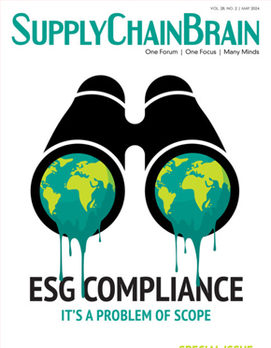
If blockchain is ever to fulfill its potential as a reliable way of recording key business transactions, it’s going to have to burn a lot less energy that it does today.
Blockchain emerged alongside the invention of Bitcoin as a supposedly immutable ledger, distributed among multiple computers, for recording transactions of the cryptocurrency. The prospect of amassing units of this radically new instrument has induced countless “miners” to solve a series of mathematical puzzles to acquire pieces of the virtual coin. And that means expending huge amounts of electricity: according to Digiconomist, Bitcoin mining alone might be consuming as much energy as all the world’s data centers, with a carbon footprint equal to the city of London.
The same stigma attaches to the application of blockchain for non-currency purposes, such as tracking product throughout the supply chain and executing “smart” contracts between buyers and sellers. Bitcoin accounts for a relatively small portion of the thousands of blockchains that are said to be in existence today, and while it likely requires more nodes than blockchains for recording other kinds of data, the latter still represent a major energy suck. With blockchain in its infancy as a tool for everyday business, that level of energy intensity clearly isn’t sustainable.
Blockchain proponents are working on solutions. Digital Power-Optimization LLC, which claims to have created the concept of “cryptocurrency mining as a service,” uses the function to help power plants and electrical grid operators save money and manage load imbalances. “We set up a mine for them on their site behind the meter,” explains founder and chief executive officer Andrew Webber. “They use the power before it leaves their infrastructure and is sold into the grid. That allows them to capture dollar values for their power —double, triple or quadruple what they’d get by selling it to someone else.”
The venture is intended to address the growing problem of electrical load imbalances caused in part by the increasing use of renewable power-generation sources such as solar and wind. Plants can adjust their selling of power into the grid to times when it’s most profitable, based on current pricing and demand.
Crypto mining as a service creates a channel for utilizing power “that is otherwise useless,” Webber says. In the process, he claims, it boosts the economic feasibility of new energy developments for a community.
None of this addresses the actual amount of energy required to power a blockchain for mining cryptocurrency or recording other business transactions. “Blockchain is energy-intensive by design,” says Webber. Miners earn currency by showing their computational efforts via an algorithm known as “proof of work,” confirming transactions and producing new “blocks.”
Webber questions the singling out of crypto mining as an excessive energy draw, calling the characterization “subjective.” He cites the amount of energy expended on financial services, Instagram, Netflix and other types of everyday computer activities. “Nobody complains about those.”
In any case, Webber says, future energy expenditures for mining and blockchain creation won’t be drawing on fossil fuels. “China’s not going to keep building coal plants. That’s nonsense. This should be embraced by environmentalists. It’s going to be the biggest consumer of renewable energy on earth.”
The age of renewables will result in a “virtually limitless” supply of energy for all purposes, Webber believes. In fact, a number of cryptocurrencies are already touting so-called “green coins,” the mining of which draws entirely on renewable sources.
Another approach to the problem comes from the venture known as Gather, which aims to lessen the energy impact of blockchain by drawing on the resources of a wide variety of computing devices, including servers, PCs, phones, and tablets, that aren’t currently in use. “We pick up idle power and use that to secure the blockchain,” explains founder and chief executive officer Raghav Reggie Jerath.
The setup doesn’t totally alter the basic nature of crypto mining, although it seeks to supplement the proof-of-work algorithm with one based on “proof of stake.” With the latter, successful miners are those who already possess the most coins. “Proof of stake brings scalability to a blockchain,” Jerath says. “If you accumulate a large portion of coins, you influence what happens.”
Webber is no fan of proof of stake, which ensures that control of the system “is dictated by those who own a 51% majority of the coin, not those who control 51% of the miners” he says. “With proof of stake, what’s to prevent a malicious entity, maybe a sovereign nation, from printing up a bunch of fiat currency, then buying 51% of coins or tokens in a keystroke? Now the network is useless.”
Regardless of how “green” crypto mining might be, or what the criteria for success are, the creation of a blockchain still requires enormous amounts of energy. In the case of Bitcoin specifically, that might ease in the coming years, as the number of coins rewarded to miners decreases by design. (It halves every four years.) But it still won’t address the larger issue of energy intensity for all types of blockchain initiatives, and until it does, the technology’s future will remain in doubt.







